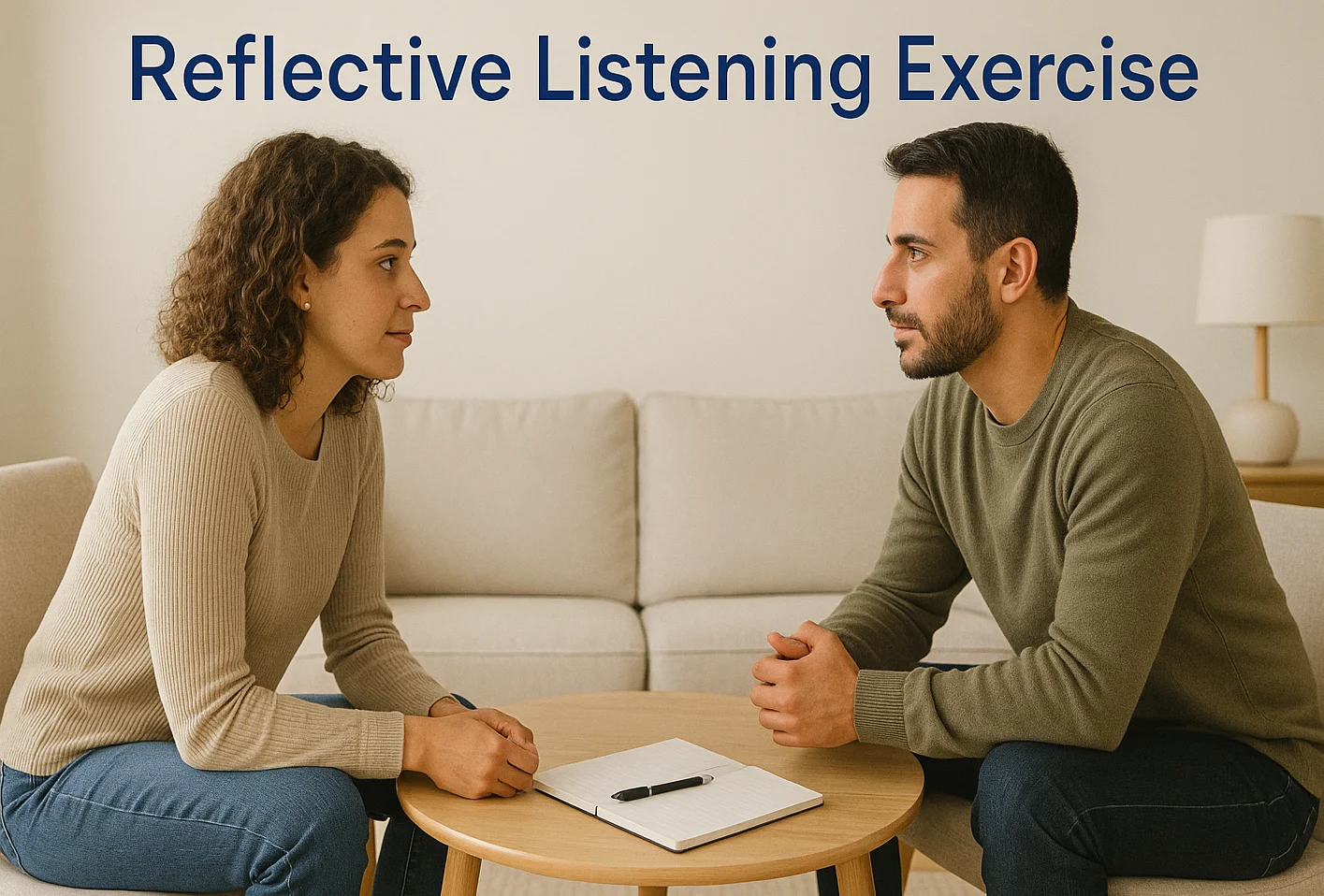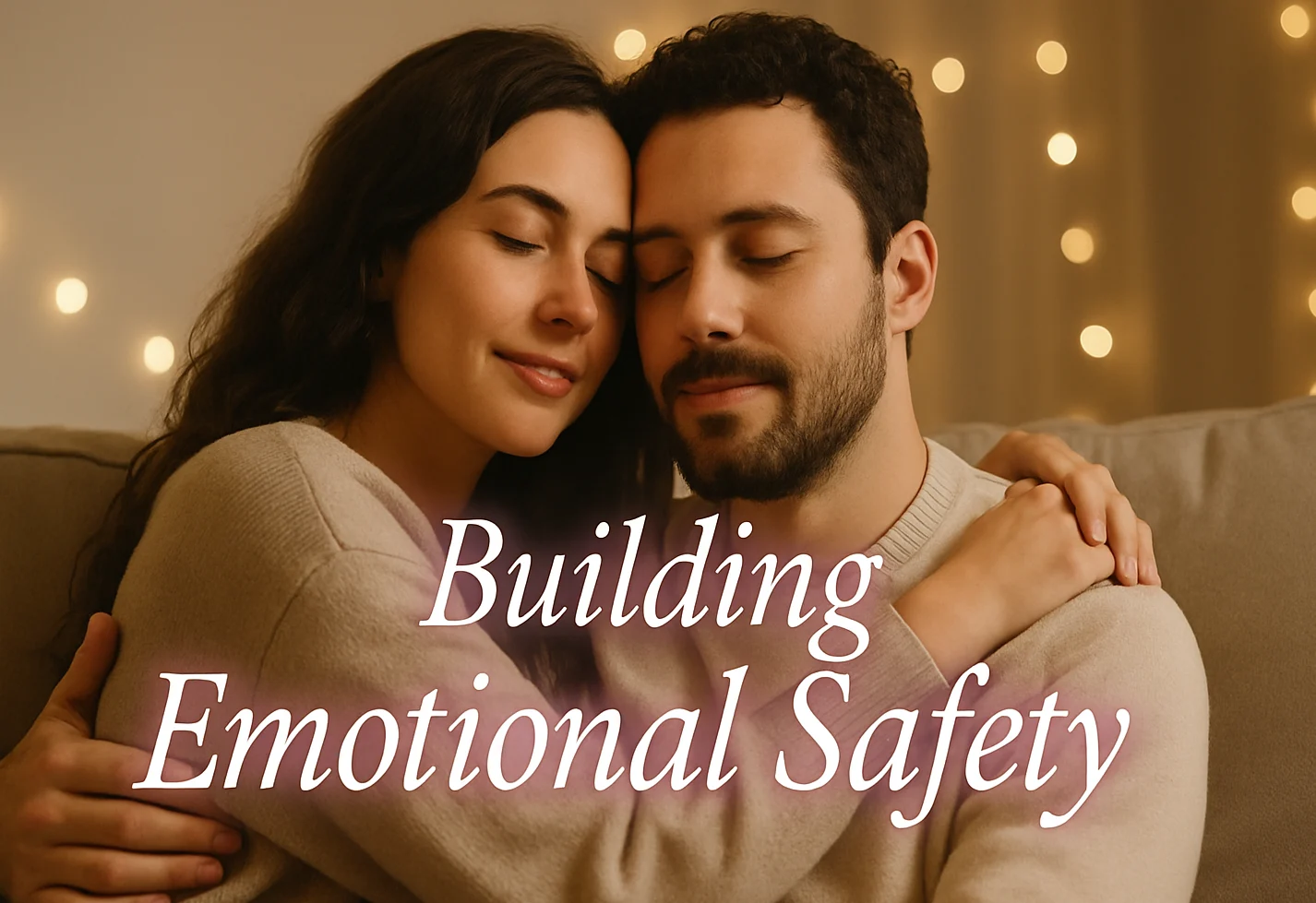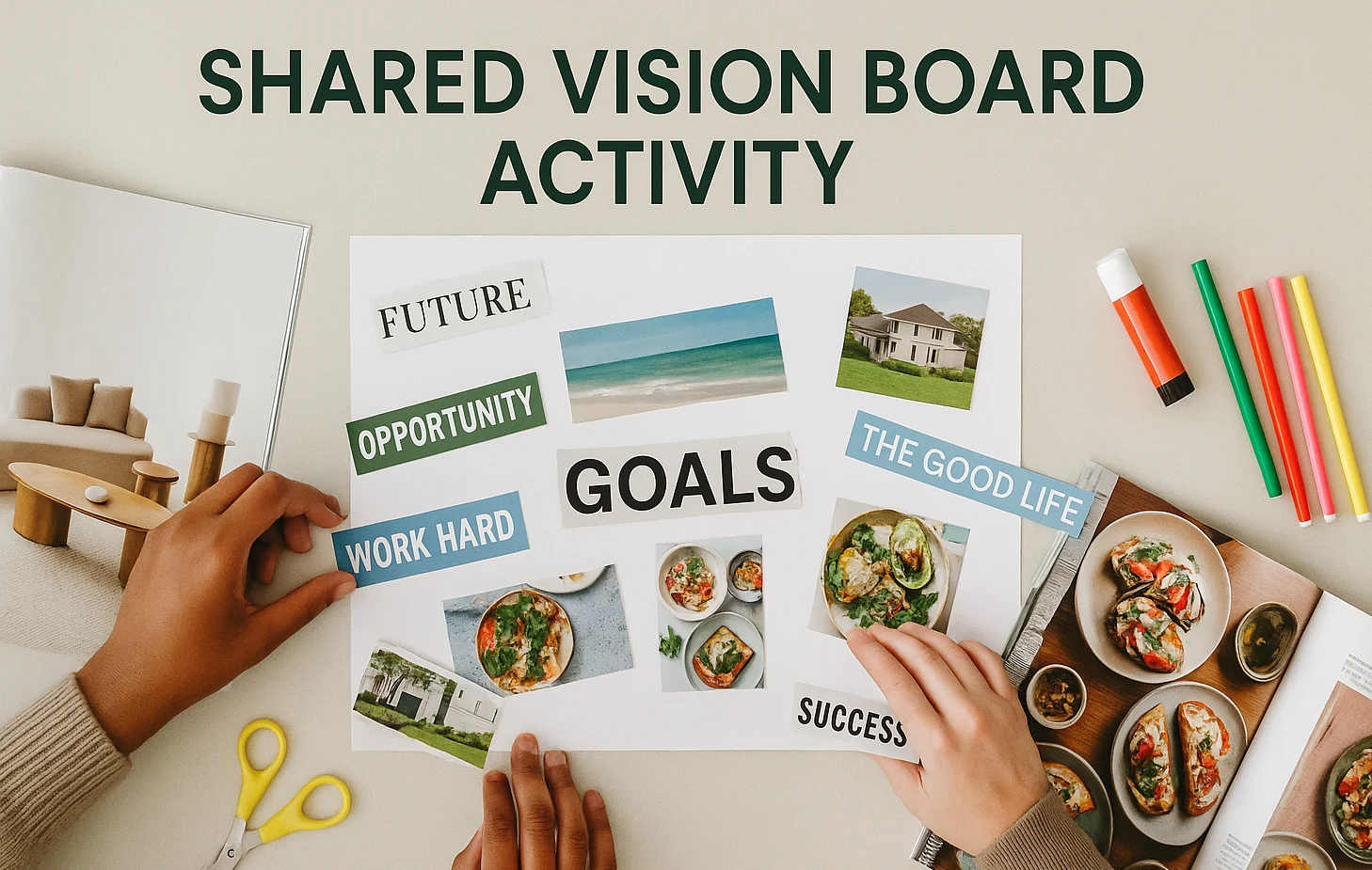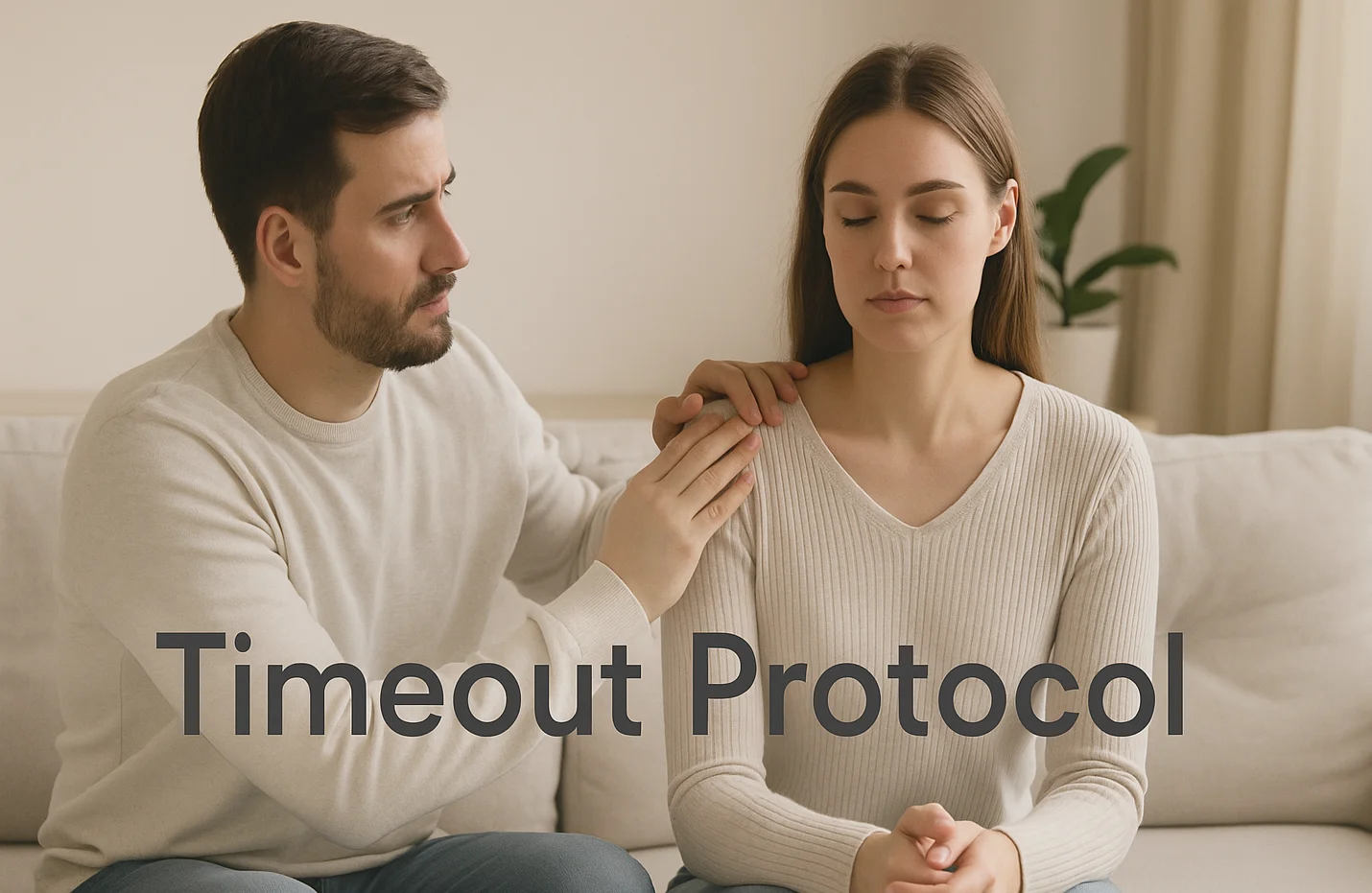
Does it ever feel like you and your partner are just sharing space instead of sharing a life? I’ve been there with my partner, feeling like the spark we had was fading. We’d pass each other in the kitchen, barely talking, and it hurt. But here’s the good news: exercises for couple therapy can bring that warmth back, right in your own home. These aren’t just tasks—they’re heartfelt moments that can help you reconnect, rebuild trust, and navigate challenges together. My partner and I have leaned on these couples therapy activities to get us through rough patches, and they’ve brought us closer than ever. Whether you’re working with a therapist or just want to strengthen your bond, these ideas can help you talk better, feel closer, and create a safe space for each other. For the ultimate resource on nurturing your connection, explore our guide — women’s relationship wellness. Ready to bring your relationship back to life? Let’s jump in!
Start Rebuilding Your Connection Today!What’s Inside
What You’ll Get Out of This
- Real Conversations: Simple ways to talk and listen without stepping on each other’s toes.
- A Safe Haven: Exercises for couple therapy to share your hearts, heal old wounds, and feel closer.
- Shared Dreams: Fun couples therapy activities like vision boards to plan a future you both love.
- Less Fighting: Kind ways to handle disagreements with relationship strengthening exercises.
- Lasting Change: A few minutes a day may help strengthen your relationship over time [Source: Gottman Institute research on small, consistent relationship-building efforts].

Why exercises for couple therapy matter at home
I used to think therapy was only for couples in big trouble, but my partner and I learned that the real magic happens in the little moments at home. Therapy can point you in the right direction, but these exercises for couple therapy are like daily hugs for your relationship. You don’t need a fancy office or hours of time—just you two and a willingness to try. The Gottman Institute suggests regular relationship strengthening exercises may help you feel more connected. Struggling to share what’s on your mind? I found this guide on sharing needs super helpful for us.
This post has affiliate links. We may earn a commission. Learn more.
“The strongest couples don’t avoid tough moments—they face them together with love.”
Ready to feel that closeness again? Here are some couples therapy activities that have brought my partner and me back together.
Talking and Listening with Heart 🗣️💬
Sometimes, it feels like my partner and I are talking past each other, especially when things get heavy. These practices helped us really hear each other and feel like a team again. They’re perfect for any couple wanting to connect through couples therapy activities.
Reflective Listening
It can feel challenging when you sense your partner isn’t fully hearing you. Reflective listening is one of those couples therapy exercises that changed how we talk. It’s about listening with your whole heart and making sure you’re on the same page.
How We Do It:
- Step 1: Open Up. One of you shares a feeling or moment for 2-3 minutes. Keep it real and honest.
- Step 2: Echo Back. The listener repeats what they heard in their own words, no judging. Like: “So, you’re upset because I’ve been too caught up with work, right?”
- Step 3: Check In. The speaker says if you got it or needs to clarify: “Exactly!” or “It’s more about feeling alone.”
- Step 4: Swap. Switch roles once the speaker feels heard.
Why It’s Been a Game-Changer for Us:
- Helps us really understand each other’s feelings.
- Stops mix-ups before they turn into arguments.
- Shows we care about each other’s hearts.
- Makes my partner feel truly seen.
I-Statements
I used to blurt out things like “You never help out!” and watch my partner shut down. I-statements, one of our favorite relationship strengthening exercises, let us share what’s bothering us without starting a fight.
How We Do It:
Try: “I feel [emotion] when [specific action] because [why it matters].”
- Examples:
- Instead of “You never listen!” say, “I feel ignored when you’re on your phone during our chats because I want to connect.”
- Instead of “You’re so messy!” try, “I feel stressed when the kitchen’s cluttered because I need a calm space.”
- Use this in everyday talks, not just big moments.
- Focus on your feelings, not pointing fingers.
Why It Works for Us:
- Makes tough talks feel safe and open.
- Helps my partner understand me without getting defensive.
- Creates space to share what we need.
- Leads to solutions we both feel good about.
The Appreciation Sandwich
Bringing up something tricky without hurting feelings is tough. The appreciation sandwich is one of those couples therapy exercises that’s saved us during hard conversations. It wraps your concern in kindness, keeping things warm and connected.
How We Do It:
- Step 1: Start with Love. Share something you cherish, like: “I love how you always make our evenings cozy.”
- Step 2: Share the Issue. Use an I-statement: “I feel left out when I don’t help plan our evenings because I want to share the fun.”
- Step 3: End with Love. Close with something sweet: “Your thoughtfulness means the world, and I can’t wait to plan more together.”
Why We Love It:
- Turns hard talks into gentle moments.
- Reminds my partner I see the good in them.
- Helps us grow without feeling attacked.
- Fills our talks with warmth and care.
Real Talk: How Sarah and John Found Their Way Back
Sarah used to feel like John wasn’t hearing her, and their arguments would just spiral. They started doing reflective listening for just 10 minutes a day. A few weeks later, Sarah told me, “It’s like we’re finally on the same team again.” It shows how small exercises for couple therapy can make a huge difference.

Building a Safe Space Together 🛡️❤️
Feeling safe to be yourself—flaws and all—is everything in a relationship. My partner and I struggled with this until we tried these couples therapy exercises. They helped us build trust and share without fear. Want to go deeper? Try bonding exercises for couples for more ways to connect.
Triggers Mapping
Ever get upset by a tone or word and wonder why it hits so hard? Those triggers often come from old hurts and can spark fights or distance. Working through them together, as part of relationship strengthening exercises, has helped us handle those moments with care.
How We Do It:
- Step 1: Look Inward. Think about what sets you off (like a sharp tone) and why it hits hard (maybe it reminds you of something tough).
- Step 2: Share Softly. Talk about your triggers, using reflective listening to really hear each other without trying to fix it right away.
- Step 3: Pick a Signal. Choose a phrase like “I need a moment” to pause when things feel heavy.
- Step 4: Be There. Decide how to support each other, like taking a quick walk or offering a kind word.
Why It’s Helped Us:
- Shows us each other’s sensitive spots.
- Keeps fights from getting out of hand.
- Brings us closer by sharing what’s real.
- Makes our relationship a safe haven.
Vulnerability Moments
Opening up about your fears or dreams can feel scary, but it’s brought my partner and me so much closer. These exercises for couple therapy create a space to share your heart and strengthen your bond with couples therapy activities.
How We Try It:
- Moment A: Share a Worry. Each of you shares something that scares you, like failing or not being enough. Listen with kindness and offer comfort.
- Moment B: Daily Check-In. Ask: “What made you happy today? What felt tough? Anything you want to share?” Listen with your whole heart.
- Moment C: Deep Questions. Try prompts like, “What’s something you’re proud of but don’t talk about much?” Take time to really listen.
Why It’s So Special:
- Deepens our bond through honest sharing.
- Builds trust by being open together.
- Helps us support each other’s struggles.
- Makes our relationship feel raw and real.
Forgiveness Talks
Holding onto old hurts is like dragging around a heavy backpack. Forgiveness, one of our favorite couples therapy exercises, has helped us let go and rebuild trust with kindness.
How We Do It:
- Step 1: Reflect Quietly. Think about a moment that hurt and how it made you feel.
- Step 2: Share Softly. Use an I-statement: “I felt hurt when you forgot our anniversary because it made me feel unimportant.”
- Step 3: Say Sorry. The listener offers a heartfelt, “I’m so sorry for hurting you.”
- Step 4: Move Forward. Say if you’re ready to let it go: “I’m working on moving past this.”
- Step 5: Plan Better. Agree on ways to avoid that hurt in the future.
A Quick Note: Big hurts like betrayal may benefit from a therapist’s guidance. These exercises can support your journey, but some challenges may need professional care.
Why It’s Healing:
- Lifts the weight of old pain.
- Rebuilds trust with sincere apologies.
- Helps us learn from mistakes together.
- Strengthens our bond through healing.

Dreaming Up Your Future as a Team 🎯🤝
When my partner and I weren’t aligned on our dreams, it felt like we were drifting apart. These couples therapy activities helped us get excited about our future together and stay on the same path.
Shared Vision Boards
Making a vision board together is like a fun date night that doubles as a relationship strengthening exercise. It’s a creative way to picture your future and get pumped about it.
How We Do It:
- Step 1: Gather Supplies. Grab a poster board, magazines, scissors, and glue.
- Step 2: Dream Alone. Each of you picks images or words for your 1-, 5-, or 10-year goals—think career, family, or travel.
- Step 3: Share Your Dreams. Talk about your clippings and find the goals you both love.
- Step 4: Build Together. Create a shared vision board with your combined dreams.
- Step 5: Keep It Alive. Hang it up and check in monthly to stay inspired.
Why We Love It:
- Helps us see what we both want down the road.
- Keeps us excited with a visual reminder.
- Feels like teamwork as we dream together.
- Brings us closer through shared goals.
Relationship Agreements
Relationship agreements are like a little roadmap for our life together. These relationship strengthening exercises keep us on track and stop small issues from turning into big ones with couples therapy activities.
How We Do It:
- Step 1: Talk It Out. Chat about what matters, like splitting chores, money, or time together.
- Step 2: Share Needs. Use an I-statement, like: “I feel calmer when we share chores evenly.”
- Step 3: Write It Down. Keep it simple, like: “I’ll do dishes during the week; you take weekends.”
- Step 4: Stick to It. Follow through and check in monthly to see what’s working.
Why It Works for Us:
- Stops arguments by setting clear expectations.
- Makes us feel like a real team.
- Builds trust when we keep our promises.
- Keeps things fair and balanced.
Future Mapping
Future mapping is one of those relationship exercises that gets us excited about our life together. It’s about dreaming big and figuring out small steps to get there with relationship strengthening exercises.
How We Do It:
- Step 1: Pick a Timeline. Think about goals for 1, 5, or 10 years from now.
- Step 2: Dream Alone. Write down your vision for your ideal life—home, career, or daily vibes.
- Step 3: Share and Blend. Talk about where your dreams match up or differ.
- Step 4: Write Your Story. Create a shared vision that captures your dreams together.
- Step 5: Start Small. List tiny steps to start now, like saving for a trip.
Why It’s Exciting:
- Gives our relationship a shared purpose.
- Gets us pumped about what’s ahead.
- Feels like teamwork as we plan.
- Makes our bond stronger through shared dreams.

Turning Fights into Moments of Growth 🚧☮️
Fights happen in every relationship, but they don’t have to pull you apart. These approaches have helped my partner and me turn arguments into chances to understand each other better. Want to practice in a peaceful setting? Check out a couples wellness retreat for more relationship strengthening exercises.
Timeout Trick
When things get too heated, a timeout is like hitting pause to catch your breath. It’s one of those couples therapy activities that helps us cool off and come back ready to talk calmly.
How We Do It:
- Step 1: Pick a Signal. Choose a phrase like “I need a break” or a hand gesture.
- Step 2: Set the Goal. Agree it’s about calming down, not dodging the issue.
- Step 3: Take a Break. Step away for 20-30 minutes.
- Step 4: Chill Out. Go for a walk, take deep breaths, or listen to music.
- Step 5: Reconnect. Come back and share how the break helped.
Why It Helps Us:
- Keeps fights from getting out of control.
- Helps us stay calm and think clearly.
- Leads to better, more honest talks.
- Builds trust in how we handle tough moments.
Nonviolent Communication (NVC)
Nonviolent Communication, created by Marshall Rosenberg, has been a lifesaver for us. It’s a way to talk about tough stuff without blame, making it one of the best relationship strengthening exercises for turning tension into connection.
How We Try It:
Use: “When I [observe], I feel [emotion], because I need [need]. Could you [request]?”
- Example: “When I see dishes in the sink, I feel stressed because I need a tidy space. Could you wash them tonight?”
- Stick to what you see, not judgments.
- Make kind, clear requests.
Why It’s Our Go-To:
- Skips blame and focuses on feelings.
- Builds understanding by sharing needs.
- Leads to solutions that work for both of us.
- Turns fights into moments of connection.
Find the Right Exercises for Your Relationship 💖
Not sure where to start? This tool helps you find exercises for couple therapy that fit your unique relationship. Results are color-coded: green for easy, beginner-friendly ideas; yellow for ones that need a bit of care; red for when a therapist’s help is best. These couples therapy activities make it simple to start strengthening your bond today.
Find the Best Exercises for Your Relationship
Pick the challenge you’re facing to get tailored couples therapy activities just for you.
Your Custom Exercises:
Your Questions, Answered
Wrapping Up: Growing Closer Every Day
Your relationship is like a cozy fire—it needs a little tending to keep it warm. These exercises for couple therapy are simple ways to nurture your connection, work through rough patches, and feel closer than ever. Start small, be kind to each other, and celebrate every moment you grow together. Want to take it further? A mindfulness retreat can be a great place to practice these relationship strengthening exercises. Keep at these couples therapy activities, and you’ll build a relationship where you both feel truly seen and loved.
